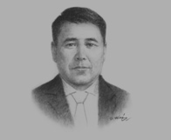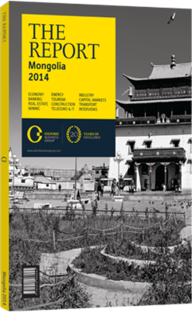OBG talks to Boldsaikhan Usukh , President, Ensada Holding

Interview: Boldsaikhan Usukh
What efforts are being made by the government to capitalise on Mongolia’s agriculture potential?
BOLDSAIKHAN USUKH: Today, special emphasis is given to the farming of crops, with investment of between $100m-200m over the next few years set to improve crop farming technology and make it more environmentally friendly. To this end, concepts such as zero tillage and direct seeding are becoming more common. Traditional agriculture equipment is also going through a renewal phase, with old and obsolete machinery being removed from Mongolian farmland. In fact, the government is focusing on transforming farming and agriculture into a major economic pillar. This includes expanding available farmland, which has shrunk considerably during the transition to a free market economy. As part of these efforts, the government is looking to eastern provinces as a new area of the country to boost agricultural activity, due to proximity with our main trading partner, China. Mongolia would be able to increase exports of oil seeds and cash crops to China, which would bring great opportunities to our local agricultural and farming industry.
What needs to be done to minimise the effects of extreme winters on agricultural production levels?
BOLDSAIKHAN: Mongolian livestock farming is still nomadic in most cases, with animals having access to large areas of land and high-quality grass. This eco-friendly approach produces good-tasting meat. However, herders also run the risk of not being able to feed their livestock when thick snow covers the grass, and the animals might also freeze to death in extreme cases. This is what dzud refers to, and in the last decade the government has paid close attention to this issue. Another government initiative has been to develop an integrated crop and livestock intensive system. This allows for herders to protect their livestock in yards and use fodder as feed, at least during extreme weather conditions. Additionally, animal tax for herders has been reduced, which means that herders can use this money to build yards and shelters for the animals. On the private side, there are a few large farming companies which have started to invest in feedlots, in particular during the winter. Meat prices have increased sharply in the last few years, so this business has become more profitable and has caught the attention of many companies. As the solution to this issue becomes more market-oriented, we can expect dzuds to be less of an obstacle to the agriculture sector in the near future.
How would you describe the current level of understanding and implementation of best practices in agriculture among Mongolian farmers?
BOLDSAIKHAN: Mongolian crop farmers have a good understanding about soil protection technologies, with farming practices dating back 1000 years. Commercial level farming started in 1959 through the Virgin Land Programme I, though since then soil fertility has decreased by almost 50% due to the use of traditional Russian technology, which has been inefficient for mechanical cultivation and ploughing. Many farmers are now investing in new equipment, applying modern concepts such as zero tillage, as well as adopting new crops into their rotation cycle, including oilseed, rye and buckwheat. This keeps the soil fresh and full of nutrients, and reduces the risk of insect disease.
In what way can the private sector help build a sustainable transfer of knowledge and technology from countries with similar weather conditions?
BOLDSAIKHAN: The first thing that needs to improve is human resource management. A 2000-ha field in Canada, for example, is managed by just one family, whereas in Mongolia it is a large company that works on it. Likewise, our equipment needs to be renewed to increase efficiency. Mongolian farming companies currently spend excessive time, resources and money on cleaning crops before selling them. As such, our knowledge and expertise on the proper use of chemicals such as pesticides and fertilisers needs to improve.
You have reached the limit of premium articles you can view for free.
Choose from the options below to purchase print or digital editions of our Reports. You can also purchase a website subscription giving you unlimited access to all of our Reports online for 12 months.
If you have already purchased this Report or have a website subscription, please login to continue.

